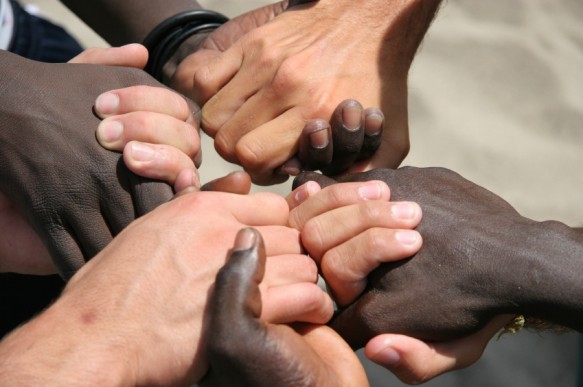
Although it may eventually cool down, the still simmering volcano that was the County Commission at last week’s meeting served to remind us that the society we live in — the one right here in Shelby County, just as much as the macro-universe around us — has become a kaleidoscope of colors and ethnicities and not a simple matter (literally) of black and white.
It has long been a truism that bitterness between ethnic factions — or ad hoc allegiances between them, for that matter — shift with the winds of social history. Leaving personalities aside, it is safe to say that at the root of last week’s commission disturbance were issues reflecting the uneasiness that can exist between one bloc and another. Or, frankly, among the several discrete and co-existing blocs.
One matter, a debate over a county roofing contract that saw Hispanic workers employed in quantity on the project but few, if any, blacks, reflects a good deal of both change and irony, as we noted in last week’s editorial. Consideration of the root issues was quickly overtaken by reaction — on our part as well as by others — to the provocative actions of a single individual, and, while political realities made that shift of attention inevitable and necessary, the root issues still persist, and deserve notice in their own right
One issue is that both our official nomenclatures and our ingrained habits of thought imagine a world that has ceased to be. Although the practice is being phased out of officialdom here and there, most of us still not only think in those antiquated black-and-white terms, but we continue to measure ethnicity that way. This, despite the fact that both “whites” and “blacks” contain multiple shades and colors and ancestries and characteristics and national/regional proclivities. Whether the diehard separatists among us like it or not, the rate of social intercourse and intermarriage is continually increasing to the point that we all encounter mixed relationships often enough to take it for granted. In the coming generations, it shall be even more so.
So, is it meaningful for our codes and regulations and acts of legislation to impose formulas in terms of “minorities” and “majorities,” or have these terms become so fluid that they really don’t mean anyting concrete? As one example, our local governmental dialogues still regard people of African-American descent as belonging to a “minority,” when, in fact, these residents now comprise a majority of the Shelby County population.
Hispanics, however, do comprise a minority population in Shelby County, and the unvarnished fact is that both legal and illegal immigrants from south of the border long ago became the cadres of the home-building industry. Does this fact of social and economic life clash with the necessity for affirmative action programs? Or is it irrelevant to it?
That was the question that never got asked last week, let alone answered. Are we talking apples and oranges or something more diffuse than that when we react to outmoded classifications?